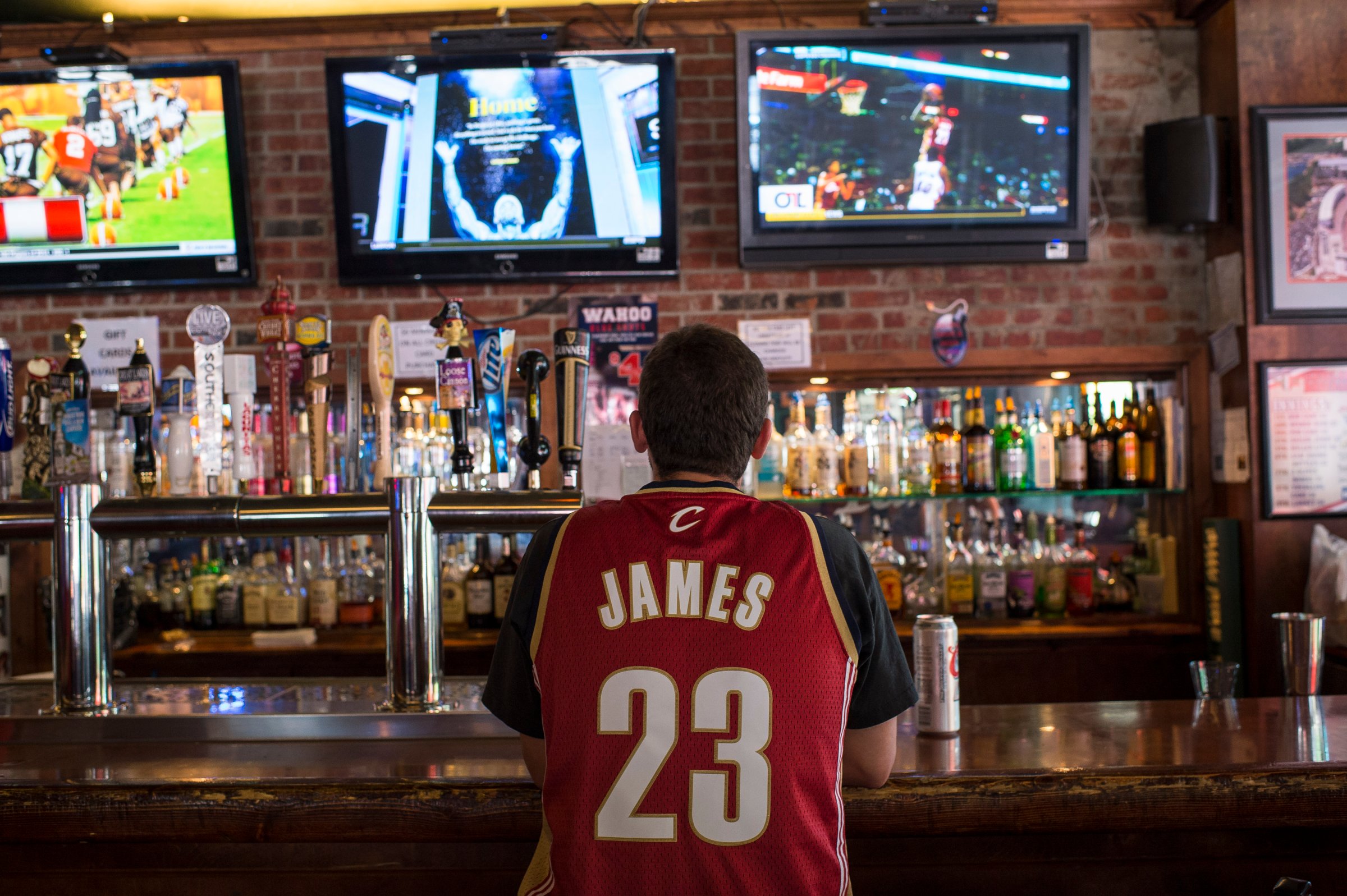
When LeBron James announced that he was coming home to the Cleveland Cavaliers, he did more than give long-suffering fans reason to believe the city could soon win its first championship in any major sport since 1964. King James also boosted Cleveland’s bottom line.
The greatest player on the planet could be an economic catalyst for the Rust Belt city. More fans will flock to Quicken Loans Arena to see James play, more staff will be needed at the arena to handle those larger crowds, more money will be spent during games at local bars and restaurants, and all of that will get pumped back into the region. The result, says LeRoy Brooks, a professor of finance at the Boler School of Business at John Carroll University in suburban Cleveland, could be nearly $500 million added to the local economy. Call it the LeBron Effect.
Of course, that forecast is preliminary and depends on a number of variables. Here’s how Brooks found his way to $500 million (or so):
Cleveland’s home-ticket prices last year averaged $68.17, according to TiqIQ. In 2009–10, the last season James played in Cleveland prior to leaving for Miami, Cavs ticket prices averaged $195. Last season, Cavs fans paid $202.74, on average, to watch Miami beat Cleveland.
Miami had the NBA’s highest average ticket price last season, at $245. To account for the lower cost of living in Cleveland, let’s make what still might be a conservative estimate: Cavs tickets go for $210, on average (remember — this doesn’t mean there won’t be plenty of seats for far less). Cavs attendance last year averaged 17,329 per game. With James, the Cavs are likely to fill up their arena’s capacity of 20,562. Spread over 41 home games, James could bring in $129 million in additional ticket revenue for Cleveland.
According to Brooks, Cleveland’s leisure economy — think hotels, bars, restaurants, shops — lost $48 million in annual revenue after James left, as fans and media lost interest in the team and spent less money. Brooks assumes that money is recovered, adjusts it for inflation, and adds a 10% premium for James’ increased popularity since 2009–10 — after all, he’s now a two-time NBA champ, and a player more on par with Michael Jordan than he was when he was last in Cleveland. That’s $57 million in local spending James brings in. Brooks estimates that money will trickle through the greater northeast Ohio area, to the tune of another $114 million. So add that amount to the haul, and that brings in $171 million of non-ticket-related economic activity generated by James. In all, we’re at $300 million.
Now, add the playoffs. Each home game generates around $15 million in economic activity, according to data collected by Brooks. Vegas has already made Cleveland the favorite to win the NBA title. For fun, let’s roll with the oddsmakers and assume the Cavs make it all the way to the finals. Let’s give them home-court advantage in the Eastern Conference playoffs — that could give them three home games a series if they don’t sweep, or if they don’t need a Game 7. Let’s say one series does need a Game 7, and a fourth home game — that’s 10 home games for the three-playoff series. In the finals, say they face the Oklahoma City Thunder or San Antonio Spurs, who have a better record, but take the series to a least a sixth game. That’s three more games. That’s 13 home playoff games in all, or $195 million from the playoffs.
Under this scenario, James delivers $495 million to northeast Ohio.
Brooks is the first to admit these are educated guesses. Cut down the number of playoff games or the average ticket price, and the economic impact will be significantly lower. Plus, the Cleveland metro area has a $111 billion GDP. At around $500 million, James’ impact would be worth just 0.42% of Cleveland’s overall economic activity.
The city has come a long way since it was known as the “Mistake by the Lake.” A booming biomedical sector, fueled by the Cleveland Clinic, has helped recover some of the jobs lost in the decline in manufacturing. The arrival of another hyped star, rookie Browns quarterback Johnny Manziel, and the GOP’s announcement that it will hold the 2016 Republican National Convention in the city have also created some momentum. And the metro-area unemployment has fallen to 6.8%, down from a recession-era high of 10% in January 2010.
Still, that rate is higher than the 6.1% national average. And the Cleveland area ranked in the bottom fifth in the country in job growth from 2012 to 2014, according to USA Today. But James’ return is welcome news in Cleveland no matter the size of the economic benefit — something even an economist can recognize.
“The Cleveland fan can expect the LeBron Effect to provide a lot more positive and less negative experiences then most of them have had in any prior year, or imagined that they would ever see in the future prior to LeBron’s announcement,” says Brooks. “Many would view this as priceless.”
More Must-Reads From TIME
- The 100 Most Influential People of 2024
- Coco Gauff Is Playing for Herself Now
- Scenes From Pro-Palestinian Encampments Across U.S. Universities
- 6 Compliments That Land Every Time
- If You're Dating Right Now , You're Brave: Column
- The AI That Could Heal a Divided Internet
- Fallout Is a Brilliant Model for the Future of Video Game Adaptations
- Want Weekly Recs on What to Watch, Read, and More? Sign Up for Worth Your Time
Write to Sean Gregory at sean.gregory@time.com